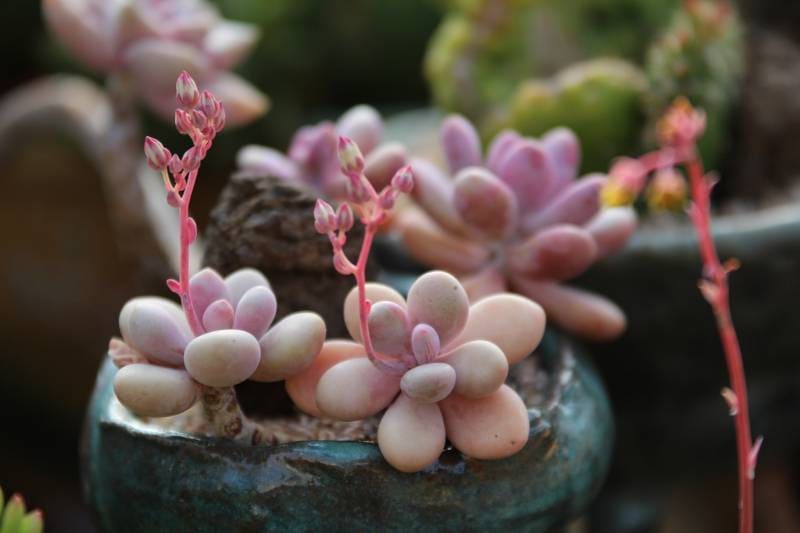Succulents, renowned for their resilience and diverse aesthetics, captivate enthusiasts worldwide. Among these botanical treasures, flowering succulents stand out, boasting exquisite blooms that add a burst of color to any space.
Embracing the Blooms: Understanding Flowering Succulents
Flowering succulents, a subcategory of succulent plants, boast vibrant blossoms, enhancing their allure. These resilient plants store water in their leaves, allowing them to thrive in arid environments. Their blooms come in various shapes, sizes, and colors, ranging from delicate pastels to striking reds and oranges.
The Marvelous Varieties: Exploring Diversity in Flowering Succulents
- Echeveria: Renowned for its rosette-shaped foliage and stunning flowers, Echeveria species grace gardens and indoor spaces alike. Varieties include Echeveria ‘Lola,’ with its lavender-pink blooms, and Echeveria ‘Black Prince,’ boasting dark foliage contrasting with bright flowers.
- Sedum: With its diverse genus comprising over 400 species, Sedum offers an array of flowering succulents. Sedum spectabile, commonly known as “Autumn Joy,” blooms in late summer, attracting butterflies with its clusters of pink flowers.
- Kalanchoe: Known for its low maintenance and vibrant blooms, Kalanchoe thrives indoors and outdoors. Kalanchoe blossfeldiana, with its cheerful clusters of red, orange, pink, or yellow flowers, adds a pop of color to any setting.
Nurturing Nature’s Gems: Care Tips for Flowering Succulents
Caring for flowering succulents requires attention to their unique needs to ensure optimal growth and blooming.
- Light: Place succulents in bright, indirect light for at least six hours daily to encourage flowering.
- Watering: Allow the soil to dry out between waterings to prevent root rot. Water sparingly, especially during the dormant winter months.
- Soil: Use well-draining soil to prevent waterlogged roots, mimicking their natural habitat.
- Temperature: Maintain temperatures between 60-80°F (15-27°C) for healthy growth.
- Fertilization: Apply a balanced fertilizer diluted to half-strength during the growing season to promote flowering.
Blossoming Beauties: Showcasing Flowering Succulents in Décor
Integrating flowering succulents into interior décor adds a touch of elegance and tranquility to any space. From minimalist arrangements in geometric planters to vibrant terrariums, the possibilities are endless.
FAQ’s About Flowering Succulents
- Can flowering succulents bloom indoors? Yes, many flowering succulents, such as Kalanchoe and Echeveria, thrive indoors when provided with adequate light and care.
- How often should I water flowering succulents? Water succulents sparingly, allowing the soil to dry out between waterings. Frequency varies depending on environmental factors like temperature and humidity.
- Do flowering succulents require special soil? Flowering succulents thrive in well-draining soil to prevent waterlogged roots. Use a mix specifically formulated for cacti and succulents.
- What is the blooming season for flowering succulents? The blooming season varies among different species but generally occurs in spring and summer when provided with proper light and care.
- Can I propagate flowering succulents from cuttings? Yes, many flowering succulents can be propagated from stem or leaf cuttings. Allow the cuttings to callus before planting them in well-draining soil.
- Do flowering succulents attract pollinators? Yes, flowering succulents, such as Sedum and Echeveria, attract pollinators like bees and butterflies with their vibrant blooms.
Embrace the Beauty of Flowering Succulents
Unveil the enchanting world of flowering succulents and elevate your indoor or outdoor space with these resilient botanical marvels. With proper care and appreciation, these blooming gems will continue to captivate hearts and minds with their enduring beauty.


